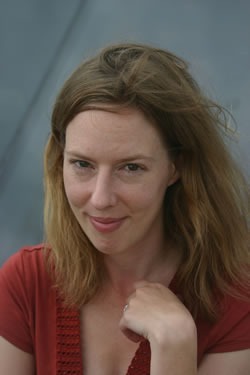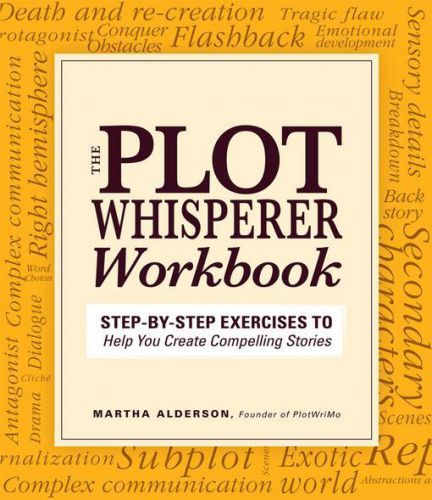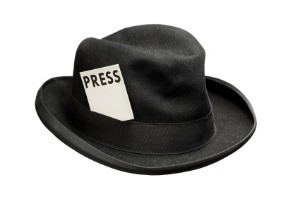Jane Friedman's Blog: Jane Friedman, page 184
September 5, 2012
Road to Publication (Paved in Book Events)
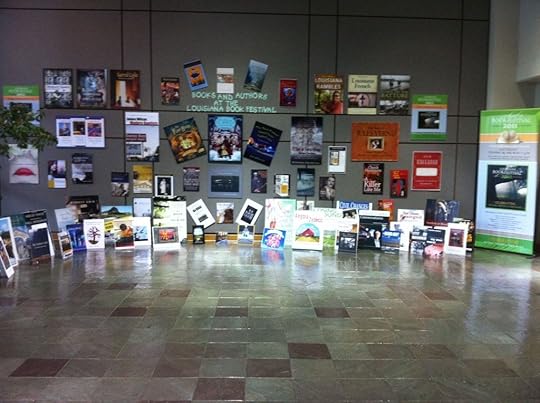
Books displayed at the State Library of Louisiana during the 2011 Louisiana Book Festival
Today’s guest post is by Darrelyn Saloom, who I first met in December 2008 at a Writer’s Digest event. Her career reached a major milestone over the summer: a book deal with Glasnevin Publishing in Ireland, which has now released My Call to the Ring, the life story of boxing champion Deirdre Gogarty.
While collaborating on a memoir with boxer Deirdre Gogarty, I never doubted we would find a publisher for the book. Captivated by her story, fear evaded me until I typed THE END and had to compose query letters to agents. I held no MFA in Creative Writing. I had no grant from the National Endowment for the Arts. My Facebook About page read: “Dropped out of high school. Hitchhiked to Oregon and picked beans on a farm. Came home. Married a few good men. Had three sons. Went to college in my thirties. Fell in love with writing.”
Not exactly résumé worthy.
I did have one chicken feather in my cap. I’d been guest blogging for former Writer’s Digest publisher Jane Friedman since I met her at a conference in 2008. So I mentioned that in my post to agents and added the manuscript was a true story of how Deirdre Gogarty became the undisputed world featherweight champion of women’s boxing in 1997.
With my letter-writing task complete, I faced another conundrum. Where to send it? I scanned long lists of literary agents and broke out in a sweat. Prone to anxiety attacks, I bailed and hired Writers Relief to choose specific agents and mail three or four batches of 25-30 query letters over I-don’t-know how many months. It was not a good time as I stretched my legs on a daily trek to the mailbox to collect rejection Post-It notes. Most were kind, prompt, and professional. The rest were not. A year’s worth of queries spurred numerous letters of encouragement but no contract.
Perhaps I should’ve noted to agents the workshops and book events I had attended. My favorite was Rick Bragg’s WordShop “Writing in Color” at the 2009 Louisiana Book Festival. For seven hours I sat enamored as Bragg taught how to evoke emotion and bring words to life. His stories made me laugh. They made me cry. And he left me with the best advice: “Be humble,” he said. “Just tell the damn story; don’t try to impress.”
In the end, writers’ conferences and book events paved the road to publication for Deirdre Gogarty and me. The journey began at our first conference in Cincinnati, Ohio, with Jane Friedman, who taught me about building platform, and ended (after a short detour) with a single query letter sent by Deirdre to Glasnevin Publishing in Ireland, where her story began.
Deirdre and I plan to travel to boxing clubs and independent bookshops in and around Dublin in the fall, so we will miss this year’s Louisiana Book Festival in Baton Rouge. We will be featured authors at next year’s festival. And I hope you will join us in 2013.
In the meantime, I highly recommend you visit the grounds of the Louisiana State Capitol on October 27. Promethean novelist, short story writer, playwright, columnist, essayist, and New Orleans native John Biguenet is this year’s recipent of the Louisiana Writer’s Award. And Rick Bragg, the world’s best storyteller, will return to teach another WordShop.
You never know what might happen at a book event. Friendships are made and lessons learned. With hard work and a bit of luck, a conference may lead to your own publication and future spot in a beloved library’s colorful display.
September 4, 2012
Drinking, Writing, and Self-Discovery
More than a year ago, I participated in a Q&A over at the Drinking Diaries website, which is a forum for women to share, vent, express, and discuss their drinking stories without judgment.
It was a fun experience and many wonderful comments came through, plus a couple people bluntly said they didn’t want to know the personal side of me—stick to professional writing and publishing advice, please.
So, fair warning, the Q&A veers away from professional writing advice. And so does the book I was asked to contribute to.
Drinking Diaries is an anthology of essays about women and drinking, edited by Leah Odze Epstein & Caren Osten Gerszberg, and published by Seal Press this month. I’m proud to say I’m a contributor, along with other remarkable women such as Jacquelyn Mitchard, Daphne Merkin, Kathryn Harrison, Ann Hood, Ann Leary, Pam Houston, Elissa Schappell, Asra Nomani, Priscilla Warner, Rita Williams, and Joyce Maynard.
My essay is dead last in the collection. Titled “Drinking as Genuine Vocation,” here’s a snippet from the middle:
I’ve always secretly thrilled at the thought that Alan Watts, a great enlightened person and spiritual teacher—admired by many—likely drank himself to death. I think it’s because alcohol helped him, like it helps me, focus on the ecstasy of what’s just right here, and to dig into the essence of life in this very moment, without the echo chamber of the mind going on and on and on. I feel more myself, without hang-ups, without getting stuck. I observe it all the more deeply and feel it all more acutely—and in this, perhaps I am like every other desperate writer, looking for the next remarkable thought.
William James said, “One of the charms of drunkenness unquestionably lies in the deepening sense of reality and truth which is gained therein. In whatever light things may then appear to us, they seem more utterly what they are, more ‘utterly utter’ than when we are sober.”
Drinking Diaries is now available as a paperback or e-book. Visit Amazon and read a sample chapter.
September 3, 2012
How to Distract Yourself From Trying to Impress
Do you find yourself writing descriptive passages meant to “wow” the reader? Later, do you find that such passages amount to nothing more than small talk?
Or maybe you’re just tired of your current revision process?
Writer Stefani Nellen stumbled on a method that has helped her attain needed distance to see her writing for what it really is—and to distract her from trying to impress:
A few months ago, I decided, as a kind of experiment, to translate a few chapters of one of my novels into German. … As I kept looking at the alien, almost-but-not-quite-normal German sentences that were supposed to be my words, I realized what I had done. By keeping my mind busy with translation issues (first from Idea to English, then from English to German), I had managed to distract myself from trying to impress. … While I struggled with the technical details, the story seized its chance to do its thing.
Read more about Nellen’s experiment here, in the latest Glimmer Train bulletin. And don’t miss these other offerings this month from Glimmer Train:
The Story That Will Not Write Itself by Karen Brown
Writing the Unfamiliar: Incorporating Different Cultures and Lands into Your Fiction by Sybil Baker
September 2, 2012
Leaving Behind Your Day Job
I worked many jobs in my younger days: Papa John’s pizza delivery driver, Cedar Point amusement park employee, McDonald’s drive-thru worker, and KFC associate, just to name a few.
Most writers have worked a number jobs before finding the way or the means to pursue writing full time. Open Road Media has put together a lovely 2-minute video featuring David Corbett, James Salter, Susan Dunlap, and others, all speaking about their day jobs before they pursued writing.
If the video doesn’t appear below, click here to view.
August 29, 2012
7 Essential Elements of Scene + Scene Structure Exercise
Today’s post is excerpted from The Plot Whisperer Workbook (Adams Media, 2012) by Martha Alderson. Two lucky commenters on this post will be selected at random on September 1 to receive a free copy of the book.
In a scene, a character acts and reacts to people, places, and events. In this respect, scenes are the basic building blocks of your story. But, as with any structure, if you have the wrong scenes or if they’re assembled incorrectly, your story can—unexpectedly—collapse.
Scene Structure Exercise
As a pre-writing exercise, it’s helpful to generate and analyze scenes for your story. If you have a draft of your story, use the scenes you’ve written. If you haven’t finished a draft, use what you have and generate the rest. It may also be helpful for you to try the exercise using scenes from a beloved book or story.
If you have no scene ideas, consider what your character wants and then visualize the steps the character will take to get what she wants. Imagine scenes that show her thwarted at every turn.
When generating a scene list, do not concern yourself with the specific elements in each scene. Simply generate scenes that show your main character moving forward for a specific purpose and the challenges she faces along the way. Resist the temptation to write the story as part of this exercise.
It’s also helpful if you give a very brief title to each scene—no more than one line. If your book is made up of many small chapters, each one encapsulating a scene, list events in the story by chapter.
The trick to this exercise is not to see how many scenes you can list. Instead, you want to identify and list scenes that advance the story on a multitude of plot levels. When you find a scene that does not advance the story, you probably need to cut it. More on that below.
The Seven Essential Elements of Scene
Whether you write short stories, novels, or memoirs and/or creative nonfiction, you will write countless scenes. Keep in mind the following elements when creating a scene. Just as plot has many different layers, every scene has layers of functions, too.
The first layer of every scene deals with time and setting. Often this layer is implied or understood from the scenes and summaries that precede it. Time and setting is crafted to ground readers in the “where” and “when” of the scene.
Dramatic action that unfolds moment by moment on the page makes up the next layer of scene.
Embedded within layer two is a layer of conflict, tension, and/or suspense. The conflict does not have to be overt, but it must be present in some form. For a real page-turner, fill a scene with tension or suspense or something unknown lurking in the shadows. Setbacks and failure create suspense, conflict, and tension, unlike success and good news, which don’t.
Conflict, tension, and suspense drive the reader to turn the page. The character’s emotional development—the heart of the story—motivates that action. Readers read stories to learn about a character’s emotional development. The word “development” implies growth or change. Therefore, character becomes a layer. The change or emotional development at the core of character is yet another.
The protagonist hopes to accomplish a specific goal within the scene. Every scene where the character’s goal is clearly understood creates a question for the reader: Will she be successful … or not?
Most stories revolve around a protagonist who goes after something, fails, and tries again. Each time life sends your protagonist reeling, she struggles to her feet and tries anew. Since at this point in the story it is best if the protagonist is in worse shape when she ends the scene than when she starts it, bear in mind that no matter how bad things get for the character, they can always get worse. Change is essential to keep your reader’s interest. A character and her emotional state should be constantly changing. If you write a scene where this is missing, chances are that the scene will fall flat and turn your story stagnant. The emotional change the character experiences within each scene does not have to be monumental, but she does have to feel and experience some sort of emotional reaction to the dramatic action in the scene. If not, you’ve done nothing to develop the character, which raises the question: why not?
Thematic significance creates the final layer of scene and the overall spirit of your story. The key to the theme lies in your reasons for writing the story and what you want your readers to take away from it. When the details you use in the scene support the thematic significance, you have created an intricately layered scene that provides meaning and depth to the overall plot.
The Plot Whisperer Workbook is full of hands-on exercises and worksheets geared toward anyone writing a narrative work. Find out more at Amazon.
August 28, 2012
EXTRA ETHER: Buying Book Reviews – Still Admire John Locke?
Potential reviewers were told that if they felt they could not give a book a five-star review, they should say so and would still be paid half their fee…As you might guess, this hardly ever happened.
That’s the New York Times’ David Streitfeld quoting Todd Jason Rutherford, who, Streitfeld reports, commissioned 4,531 glowing and completely bogus book reviews at the now-inactive GettingBookReviews.com.
The story, The Best Book Reviews Money Can Buy, describes what Nate Hoffelder at The Digital Reader is calling The Next Great Promotional Tool for Self-Published Authors. Writes Hoffelder:
If you’re a self-published author who is still struggling to get noticed, now might be the time to swallow the rest of your pride, jettison your code of ethics, and start buying reviews. (Hey, everyone is doing it.)
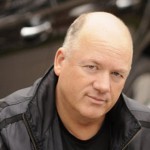
John Locke: “Ready to roll.”
The part of Streitfeld’s article that grabs Hoffelder’s attention is the revelation that the self-publishing icon John Locke used Rutherford’s service to generate false reviews for his books.
Writes Streitfeld:
One thing that made a difference is not mentioned in (John Locke’s book) “How I Sold One Million E-Books.” …Mr. Locke commissioned Mr. Rutherford to order reviews for him, becoming one of the fledging service’s best customers. “I will start with 50 (reviews) for $1,000, and if it works and if you feel you have enough readers available, I would be glad to order many more,” he wrote in an Oct. 13 (2010) e-mail to Mr. Rutherford. “I’m ready to roll.”
“It’s hard to overstate how angry I am with shysters like John Locke for taking the easy way out.” http://t.co/rTUk65kZ #selfpubauthorsspeak
[image error]about 17 hours ago via Twitter for MacReplyRetweetFavorite
Evil Wylie
Streitfeld writes:
Mr. Locke was secure enough in his talents to say that he did not care what the reviews said. “If someone doesn’t like my book,” he instructed, “they should feel free to say so.”
But additionally:
He also asked that the reviewers make their book purchases directly from Amazon, which would then show up as an “Amazon verified purchase” and increase the review’s credibility.
That last detail strikes Chad W. Post as particularly rich. He writes, in John Locke Paid People to Buy His Books [Last Laughs Laugh Best]:
Oh, John Locke, you tricky little man! So not only did you pay for positive reviews, but you paid for people to buy your books! That’s both dishonest, and a bit desperate seeming. Granted, you’re still a millionaire, and I’m sitting in a library trying to convince freshman to take translation classes, but well, I have my dignity.
Locke confirms his participation in all this to Streitfeld — 300 bought reviews before Rutherford’s fake-review operation was exposed by another author-client who didn’t like what she got for her money.
Bite me, John Locke. Bite me. Three Percent: John Locke Paid People to Buy His Books [Last Laughs Laugh Best] http://t.co/Zp9MeHAi
[image error]about 20 hours ago via Tweet ButtonReplyRetweetFavorite
Chad W. Post
Kerfuffle in the Industry! the Industry!
The coverage has set off what one wise observer terms a kerfuffle, potentially pivotal but also relatively contained: we cannot be all that surprised.
As a publishing contact in New York says to me, Amazon is, really, “the only game that counts big-time for self-publishers.” As far as distribution channels go, Seattle is the mountaintop.
On Amazon John Locke gets it in the neck for paid reviews http://t.co/v6SbSn5b
[image error]about 6 hours ago via EchofonReplyRetweetFavorite
David Hewson
Traditional-publishing consultant Mike Shatzkin in his new post, Things to think about as the digital book revolution gains global steam, positions Amazon as the key engine of the digital dynamic. He’s not writing about the review-buying scandal, but about the contours of a profoundly upended business:
With all due respect to everybody else, the primary driver of this change (print to screen) has been the efforts of Amazon.com. They made the online selling of print books work in the US and then provided the critical catalyst — the Kindle — to make ebooks happen. Other players — Barnes & Noble and Kobo with their devices and the publishers with their sales policies — have crafted their strategies primarily in response to Amazon. They are participants building out a market that Amazon first proved existed.
Join the 199 people who’ve already “Liked” this review. Let John Locke know that readers don’t appreciate being conned. http://t.co/GbJYJaOb
[image error]about 10 hours ago via webReplyRetweetFavorite
Lee Goldberg
Incensed about this new “thing to think about as the ebook revolution gains global steam,” Edward Tenner is at The Atlantic, reacting to Streitfeld’s stark revelation of a review-buying and -selling.
In Will Paid Reviews Bite Amazon Back? Tenner writes:
Amazon has a dilemma. So far the system has been working, but what happens when players out themselves? Even last year, detractors were calling it Spamazon. Could there be a tipping point of credibility?
This drops us quickly into one of those bottomless rabbit holes we see open up from time to time as a feature of the “freedom” of technology.
The “democratizing” of content on the Internet, as it’s touted by some, suddenly looks less attractive when users realize they’re the victims of ruthless, orchestrated, profiteering liars.
Tenner:
Amazon’s model relies on reader judgment as a substitute for the traditionally vigorous competition among publishers, writers, retailers, and critics. Of course there is favoritism and bias in that system, but also lively rivalry, in which best-sellers from Gone with the Wind to Harry Potter and the Philosopher’s Stone have ultimately been recognized after multiple rejections. Paid choruses of praise like Mr. Rutherford’s make the established system, flawed though it often is, appear a more reliable alternative.
It’s not all good out there in self-publishing land. Did John Locke sell 1 million ebooks by paying for reviews? http://t.co/4eu3KTE0
[image error]August 26, 2012 2:21 pm via webReplyRetweetFavorite
Laurie McLean
A ‘wide range of responses’
As he frequently does, Jason Boog at GalleyCat pulls off an entertaining twist on the issue, creating a list of Major Bestsellers with More Than 150 One-Star Reviews.
Boog starts with this assertion:
While paying for book reviews creates the illusion of a perfect book, true bestsellers will generate a wide range responses from readers.
He then lists his one-starred best-sellers. I’ll show you the Top Five here, the first being especially gratifying to some, I’m sure, emphasis mine:
1. Fifty Shades of Grey by E. L. James (3,665 one-star reviews)
2. Twilight by Stephenie Meyer (717 one-star reviews)
3. A Dance with Dragons by George R.R. Martin (456 one-star reviews)
4. The Girl with the Dragon Tattoo by Stieg Larsson (432 one-star reviews)
5. A Discovery of Witches by Deborah Harkness (248 one-star reviews)
Despite the fun of that switch-around, the issue of these paid reviews — Streitfeld says Amazon has taken down some if not all of Rutherford’s — presents a coin with tails on both sides.
This is fraud! This guy, along with John Locke and his ilk, should be banned by Amazon for defrauding their clients http://t.co/xmDb4Pxx
[image error]about 5 hours ago via Twitter for MacReplyRetweetFavorite
Peter May
The obvious commercial issue
How does any market handle this kind of perversion of a key advertising and marketing instrument?
Nate Hoffelder can almost be heard chortling behind the satiric headline on his own follow to Streitfeld’s Times piece, his “Next Great Promotional Tool for Self-Published Authors.”
Hoffelder readily writes of how glad he is that the Rutherford faux-review “service” was shut down by the revelations of some of its own clients:
Once Rutherford’s service was exposed to the light of day, it was dead. The writing blogs took up the torch of shaming him into shutting down, and then Amazon took down some of his reviews and Google cancelled his Adwords account (so he couldn’t buy advertising).
Along the way, however, it’s worth pointing out that self-publishing authors aren’t necessarily the only bad apples here. What’s to have stopped a traditionally published author who wanted to gin up her or his sales of a newly listed book with a splash of gushing, fabricated reviews?
I’d like to see Amazon take a hard line against John Locke, Stephen Leather & other authors who swindled readers w/ fraudulent reviews.
[image error]August 26, 2012 8:40 pm via webReplyRetweetFavorite
Lee Goldberg
The issue in publishing
Some people will, of course, rush to blame this on Amazon. Having developed the consumer review to be such a key element of retail, Seattle does, of course, need to work to discern and cut the legs off scams of this kind. The company is, I’m sure, the first entity to know this.
But this is not Amazon’s fault.
This is the fault of feckless writers whose relation to what most of us know as the world of literature is so warped that they’re willing to hack the system this way. It’s bad enough when some writers make nasty agreements with each other to “trade” good reviews of each others’ work.
These people have little to do with the world of legitimate traditional publishing or self-publishing. They damage the art and the business for their own gain.
Locke, as his role in this is given to us by Streitfeld, appears to have been a happy customer of Rutherford. Having e-mailed Rutherford in 2010 that he was “ready to roll” with the false reviews he bought, he seems unapologetic now for using such a mechanism to build his now-discredited “success.”
Locke has confessed in the Times to contravening Amazon policy. If you enjoy writing reviews of shoes, you may want to keep an ear out for the sound of another one falling.
For now, we’re left with this echo — shabby chatter in the hard-surfaced tunnel of a digital reality — from Streitfeld’s article:
“Reviews are the smallest piece of being successful,” (Locke said). “But it’s a lot easier to buy them than cultivating an audience.”
| | |
Tell me what you think. Is there any case in which buying reviews can be appropriate? Do you know a writer who has bought reviews? If so, how does that writer justify it?
Epub guru John Locke admits buying favorable reviews from “review for hire” service.http://t.co/wJoUWMmy
[image error]about 12 hours ago via webReplyRetweetFavorite
watchman55
Join us Thursdays at JaneFriedman.com for Writing on the Ether, presented this week by Ether sponsors Deirdre Gogarty and Darrelyn Saloom, authors of My Call to the Ring: A Memoir of a Girl Who Yearns to Box.
Main images: iStockphoto: gszostak
August 22, 2012
How to Get More (and Better) Press
Today’s post is by freelance journalist and independent author Dana Sitar (@DanaSitar).
You’ve just released a book. You’re participating in a live reading. You’re planning a book tour.
Whatever it is, you want press.
While social media and blogs are a great way to share news with your audience, the value of a good article in print or online news media is undeniable.
From a journalist’s perspective, however, a lot of artists are tough to cover!
Your press releases are great to receive—as long as they’re on a topic I cover. But remember, your press release is written from the perspective of someone trying to sell or promote something, not by someone trying to cover the news. As someone trying to cover the news, I usually have more questions, and the first place I go to answer them is your website.
Some of the things I look for (and often don’t find) are:
Contact info
This is Author Website 101, but still some forget it. If your contact information is not on your homepage, make sure the link to it is easy to find (e.g., have a tab clearly marked “Contact”). If I learn of your event or news on my own and want to follow up, I’ll be much happier if I don’t have to traipse through Google and Facebook to find your e-mail address or phone number.
More info on your big news
If you’re announcing an event, I want to see an events calendar or listing on your website with location, date, time, and who else is involved. If you’re announcing a book release, I want to see a “Books” page on your website with synopses and buy links. These are easy places for a reporter to go for more information and verify what’s in your press release. They’re also an opportunity for me to link back to your website if my article is published online.
A page for the press
You may not need this on your site at all times, but when you’ve got big news and you’re contacting press, create a page with all pertinent information. Whenever I release a book, my press page goes live with downloadable cover art, a headshot (with credit), a short bio, a short description of the book, my contact information, links to other articles about me, plus interviews I’ve done. Sticking this all in one place with a clear label not only helps someone you’ve reached out to, but it also indicates you have something worth reporting.
What you—the author—do
This seems implied, doesn’t it? Yet I don’t know how many times I’ve tried to write a story about a comedian whose website hasn’t been updated to include half of the shows he produces each month. As a writer, you might wear a lot of hats besides author of your most recent release. Don’t forget to mention the key things you do—teaching, speaking, blogging, consultation, editing—so the press and your readers can get to know you better.
Action step
If you have a website and you’re contacting press, you must be trying to promote something. When someone visits your site, that something should be clear. Have a clear step for people to take after they’ve found what they’re looking for. Do you want them to buy your book? Do you want them to follow your live tour? Do you want them to sign up for your newsletter? Be sure that the action step is part of your message to the press, and that it’s clear and easy to follow from any point on your website.
Do you have any hard-won advice about dealing with the press, or scoring mentions in the media? Share your experiences in the comments.
August 21, 2012
Two Deadly Sins of Memoir Writing
Today’s post is excerpted from You Should Really Write a Book by Regina Brooks and Brenda Lane Richardson. Copyright © 2012 by the authors and reprinted by permission of St. Martin’s Griffin.
In considering memoir writing through the prism of relationships, it’s important to alert you to two deadly sins. From the standpoint of trying to engage readers, these “sinful” behaviors are every bit as offensive as going on a first date and talking ad nauseum about your ex, or texting at the movies.
1. Self-Pity
Invite folks to a pity party, and you will be a lonely host. If you want to avoid sounding sorry for yourself, consider whether you have resolved most of the issues you’re writing about. If you have not, you may want to concentrate on writing strictly for the sake of healing, with plans to undertake a more commercial endeavor later. It’s up to you to decide whether you have triumphed over these difficult circumstances.
2. Vengeance
If you want to sell your memoir, don’t write to air old grievances. Sourcebooks Trade’s editorial manager Peter Lynch explained that he loses interest in manuscripts if the author’s motives feel too personal. “If your goal in publishing a memoir about your custody battle is to let the world know how terrible your ex is, that is of little interest. But if your goal is to show how a parent’s love is complicated and sometimes requires touch decisions, that’s a universal theme.”
In memoir writing, attempts to retaliate will backfire, causing you to portray yourself, the protagonist, in the most flattering light, while your antagonist comes off as one-dimensional and malevolent. Hissable villains only work in dated cartoons. Readers will turn against you when they sense you are trying to manipulate them onto your side.
This anti-vengeance advice also pertains to your parents. If you catch yourself blaming them for your problems, it may be a good time to do genogram work. This therapeutic system allows you to trace familial behaviors, beliefs, and patterns. It can help you better understand your parents and yourself. Instructions for constructing genograms by hand or with software can be found at various websites. You may also choose to seek out a clinician who uses the genogram in therapeutic practice.
Other efforts at healing, which might include working with a therapist or supportive group, may also help you feel more forgiving, which is a self-enhancing process—and facilitative to the writing process. The word “forgiveness” is by no means a suggestion that you forget what happened to you. By its very nature, memoir writing is about remembering. However, if you hope to sell your manuscript, you have to work through the issues you’re writing about, so readers will be more likely to trust you.
Speaking of relationships with parents, you may have noticed that some critics find it “amazing” when an author writes of loving or forgiving the most flawed mothers and fathers. In truth, it’s not unusual to find even adults who were removed from abusive homes longing for their parents. The bond between parent and child is often enduring. How else could humankind survive? Please don’t misinterpret this as a suggestion that you should manufacture emotions, which wouldn’t be healthy for you or your writing. The truth is, though, if you present a parent as the embodiment of evil, it will be a disservice to you and your work.
To read more—including advice on coming-of-age memoirs, addiction memoirs, travel and food memoirs, and religion & spirituality memoirs—visit Amazon to preview and read the first chapter.
August 20, 2012
EXTRA ETHER: DBW’s Best-Seller List
All I’m askin’
Is for a little respect when you come home
(just a little bit)
Now, honey, you can find out more, just a little bit, about what ebooks mean to me and you with respect to the market, in a new and welcome ebook-only best-seller list from Digital Book World.
What you won’t find out? –who the authors are.
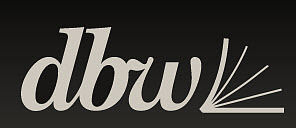 That’s #DBW to your tweetly neighbors, one of the verticals of F W Media. And today, it’s inaugurating its interesting DBW eBook Best-Seller List, which keys into pricing as a way to evaluate what’s selling and for how much.
That’s #DBW to your tweetly neighbors, one of the verticals of F W Media. And today, it’s inaugurating its interesting DBW eBook Best-Seller List, which keys into pricing as a way to evaluate what’s selling and for how much.
Each Monday, you’ll see not only the best-selling 25 ebooks, all told, of the previous week, but also the Top 10* in each of these price bands:
$10 and above
$8-$9.99 *We see a Top 8 in this band in the early look I’m being given, not 10, and that’s because only eight ebooks from the $8-$9.99 group placed in the Top 100 ebook best-sellers, from which these breakouts are drawn.
$3-$7.99
$0-$2.99
An explanatory Digital Book World E-Book Best-Seller List Methodology Expert Blog entry is here from Iobyte Solutions’ Dan Lubart, who writes:
In the absence of real-time, raw sales numbers for all the retailers — which nobody has — we thought it best to address some of the problems with current e-book best-seller lists:
One-hit wonders
No differentiation between $0.99 e-books and $12.99 e-books
No accounting for which publishers are selling the most e-books
Jeremy Greenfield also has an overview, Agency Publishers and Pricing Top Debut DBW E-Book Best-Seller List, hitting high points of the list, “which measures the top-selling e-books across five of the largest e-booksellers.”
In her advance writeup on the new list, F W’s Stacie Berger explains:
The list…aggregates the previous full week’s sales ranking data from Amazon, Nook, Google, Kobo and Sony…Price is a fundamental correlative to sales; reporting, tracking and analyzing pricing and its relationship to e-book sales is the primary objective of the weekly Digital Book World best-seller list.
As Sarah Weinman at Publishers Lunch notes in Digital Book World Launches Aggregated eBook Bestseller List, the methodology includes a proprietary DBW weighting of the five retailers’ market shares. Lubart’s methodology notes reference this:
Each retailer (is) weighted by approximate market share as determined by the editors of Digital Book World and Iobyte Solutions.
Bestseller list creation shouldn’t be this complicated. I wish we could see real ebook sell-thru data instead: http://t.co/iJB3zJwO #TOCcon
[image error]about 22 hours ago via TweetDeckReplyRetweetFavorite
Joe Wikert
Even e-books have authors

David Nussbaum
F W CEO David Nussbaum gets it right in his quote for the news release:
“Because it is still a very young business, the entire channel — authors, agents, publishers, and consumers — need clear and focused information about best-sellers. We aim to provide that with our new DBW tool.”
Good to see authors mentioned in Nussbaum’s comment, right?
So it would be even better to see them listed with their works on the new DBW eBook Best-Seller List. That’s not happening, at least not in the advance copy of the debut list provided to the media.
While the digital dynamic and its pricing upheavals are gathering enough weight to warrant this kind of specialized attention, ebooks appear to be writing themselves. The Miracle at DBW, of course, is easily remedied, and probably the result of an oversight as the industry! the industry! learns new patterns of recognition.
The new list, with publishers properly attached to each entry, has much to commend it, and will be even more valuable when the inclusion of authors’ names brings it up alongside the author-inclusive lists of the New York Times, USA Today, the Los Angeles Times, GalleyCat in its self-published best-seller lists, and others.
Whoa, babe (just a little bit)
A little respect (just a little bit)
Meanwhile, there are useful points to note in this week’s initial outing.
Got an email from a “fan” outraged that a novel I’ve been working on for two years, six days a week is $13 in ebook. Enjoy your $4 coffee.
[image error]August 12, 2012 6:27 pm via TweetCaster for iOSReplyRetweetFavorite
Brent Weeks
To be clear, I applaud @‘s efforts. I just wish we could have real lists & numbers, not rough approximations. #TOCcon
[image error]about 22 hours ago via TweetDeckReplyRetweetFavorite
Joe Wikert
Four (actually three) of 25 under $3
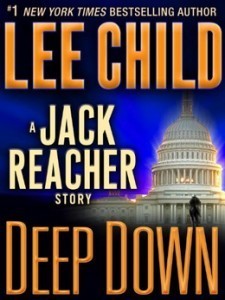 In the Top 25 overall list, you’ll find that four ebooks are listed as being sold for less than $3.
In the Top 25 overall list, you’ll find that four ebooks are listed as being sold for less than $3.
There’s a caveat coming on one of those four:
At No. 11: Deep Down: A Jack Reacher Story sells for $1.99 (at Ether time). It’s by Lee Child.
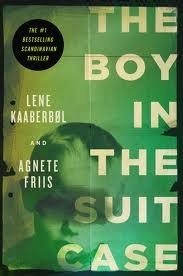 At No. 12: The Boy in the Suitcase sells for $1.39. It has two authors, Lene Kaaberbøl and Agnete Friis.
At No. 12: The Boy in the Suitcase sells for $1.39. It has two authors, Lene Kaaberbøl and Agnete Friis.
At paidContent, Laura Hazard Owen just posted one of her fine Friday eBook Bestseller Breakdown analytical pieces on this one.
Her article will help you understand how it has reached such success.
At No. 20: This Is Where I Le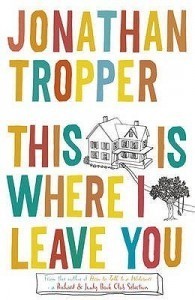 ave You: A Novel, at Ether time shows a Kindle price of $12.99, although the DBW list sees it selling for $2.99.
ave You: A Novel, at Ether time shows a Kindle price of $12.99, although the DBW list sees it selling for $2.99.
Those darned algorithms strike again.
The author, at any price, is Jonathan Tropper.
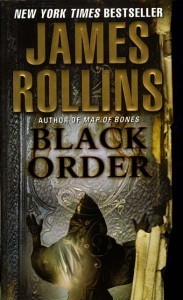 At No. 25: Black Order (Sigma Force, Book 3) is listed as selling at 99 cents.
At No. 25: Black Order (Sigma Force, Book 3) is listed as selling at 99 cents.
That agrees with the Kindle price we see listed at Ether time.
It’s by James Rollins.
My Kickstarter whoooshed past $7,000, so I’ll be doing a Complete Stories e-book! http://t.co/JcXSfrYk
[image error]August 19, 2012 10:13 pm via TweetDeckReplyRetweetFavorite
Tim Pratt
Big Six Domination
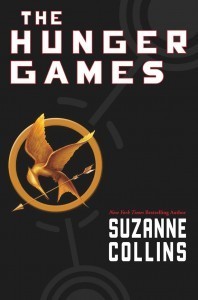 As Berger’s prepared material also points out — the Top 25 list includes only four ebooks not published by Big Six houses.
As Berger’s prepared material also points out — the Top 25 list includes only four ebooks not published by Big Six houses.
Those four are the three books in The Hunger Games series by Suzanne Collins, from Scholastic. And there’s Kaaberbøl and Friis’ The Boy in the Suitcase mentioned above, which is published by Soho Press.
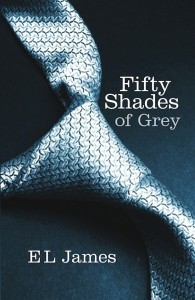 It appears the Fifty Shades of You Know What series by E.L James may be overtaken one ebook at a time.
It appears the Fifty Shades of You Know What series by E.L James may be overtaken one ebook at a time.
The first ebook of that trilogy stands at No. 4 in the Top 25 ranking.
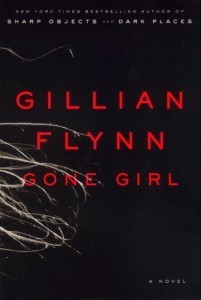 Gone Girl: A Novel by Gillian Flynn taking the No. 3 spot.
Gone Girl: A Novel by Gillian Flynn taking the No. 3 spot.
Self-publishing enthusiasts may be concerned to note that only two self-published ebooks appear to figure into the various rankings in the first week’s outing for the DBW list.
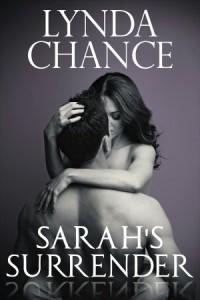 In the Top 10 breakout for ebooks selling at $0 to $2.99, Sarah’s Surrender by Lynda Chase is ranked No. 5 on this breakout scale (No. 26 on the main list).
In the Top 10 breakout for ebooks selling at $0 to $2.99, Sarah’s Surrender by Lynda Chase is ranked No. 5 on this breakout scale (No. 26 on the main list).
And Weekends Required by Sydney Landon is at No. 9 on this breakout (No. 30 on the main list).
 The listings for self-published authors do note those authors’ names, by the way, the notation taking the form of “Self: Lynda Chance” and “Self: Sydney Landon.”
The listings for self-published authors do note those authors’ names, by the way, the notation taking the form of “Self: Lynda Chance” and “Self: Sydney Landon.”
In creating its new list, DBW acknowledges the guidance of:
industry consultant Mike Shatzkin;
Agent Simon Lipskar;
Book Industry Study Group’s Len Vlahos; and
Bowker Market Research’s Kelly Gallagher.
OMG, a positive article in The Guardian about Fifty Shades. Is the editor on holiday?
[image error]August 18, 2012 7:55 am via webReplyRetweetFavorite
E L James
Higher Prices Rule

Author E.L. James’ Fifty Shades ebooks, at Nos. 1, 2, and 4 on the inaugural list, are priced at $9.99.
The real story in this first week’s release of the new list lies in the pricier ebooks.
The Top 25 is dominated not only by ebooks published by major houses but also by price points on the upper end.
I count 17 of the Top 25 selling at $9.99 or higher. Four more are priced between $5 and $7.99.
These rankings won’t gladden the eyes of publishing community members who favor those ultra-low prices. But the value here is the data-based provision of this big picture by Iobyte Solutions. Even when the news isn’t what some want, clarity has its payoffs.
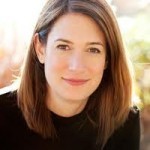
Author Gillian Flynn’s Gone Girl, at No. 3 in this week’s debut ebook list, sells for $12.99.
Those working in the self- and small-publishing fields of the industry may see new goals in the trends arrayed for us over weeks and months to come with the DBW list.
Authors who are studying the best routes for their projects — often a “hybrid” mix of traditional and non-traditional publishing — might find new direction in genre, price points, and staying power on these lists.
Whether the news is what you’d like it to be or something else, DBW has offered us a new tool, a new way to see how things are looking in the ebook market.
And for that — while eagerly watching for those authors’ credits — we can certainly show some respect.
| | |
What do you think? Is there value for you in the approach DBW’s new ebook best-seller list is taking? How would you account for the small number of low-priced ebooks in the Top 25? And how would you account for the overwhelming dominance of major houses’ ebooks on the list?
Join us Thursdays at JaneFriedman.com for Writing on the Ether, presented this week by Ether sponsors Deirdre Gogarty and Darrelyn Saloom, authors of My Call to the Ring: A Memoir of a Girl Who Yearns to Box.
For the record: I’m a member of DBW, I contribute to its Expert Publishing Blog, and I work with F W Media to cover its major conferences.
Main images: iStockphoto / lbd
EXTRA ETHER: How Best to Sell a List
And all I’m askin’ in return, honey
Is to give me my profits
When you get home (Just a, just a, just a, just a)
Yeah baby (Just a, just a, just a, just a)
When you get home (Just a little bit)
Yeah (Just a little bit)
Now, honey, you can find out more, just a little bit, about what ebooks mean to me and you with respect to the market, in a new and welcome ebook-only best-seller list from Digital Book World.
What you won’t find out? –who the authors are.
 That’s #DBW to your tweetly neighbors, one of the verticals of F W Media. And today, it’s inaugurating its interesting DBW eBook Best-Seller List, which keys into pricing as a way to evaluate what’s selling and for how much.
That’s #DBW to your tweetly neighbors, one of the verticals of F W Media. And today, it’s inaugurating its interesting DBW eBook Best-Seller List, which keys into pricing as a way to evaluate what’s selling and for how much.
Each Monday, you’ll see not only the best-selling 25 ebooks, all told, of the previous week, but also the Top 10* in each of these price bands:
$10 and above
$8-$9.99 *We see a Top 8 in this band in the early look I’m being given, not 10, and that’s because only eight ebooks from the $8-$9.99 group placed in the Top 100 ebook best-sellers, from which these breakouts are drawn.
$3-$7.99
$0-$2.99
An explanatory Digital Book World E-Book Best-Seller List Methodology Expert Blog entry is here from Iobyte Solutions’ Dan Lubart, who writes:
In the absence of real-time, raw sales numbers for all the retailers — which nobody has — we thought it best to address some of the problems with current e-book best-seller lists:
One-hit wonders
No differentiation between $0.99 e-books and $12.99 e-books
No accounting for which publishers are selling the most e-books
Jeremy Greenfield also has an overview, Agency Publishers and Pricing Top Debut DBW E-Book Best-Seller List, hitting high points of the list, “which measures the top-selling e-books across five of the largest e-booksellers.”
In her advance writeup on the new list, F W’s Stacie Berger explains:
The list…aggregates the previous full week’s sales ranking data from Amazon, Nook, Google, Kobo and Sony…Price is a fundamental correlative to sales; reporting, tracking and analyzing pricing and its relationship to e-book sales is the primary objective of the weekly Digital Book World best-seller list.
As Sarah Weinman at Publishers Lunch notes in Digital Book World Launches Aggregated eBook Bestseller List, the methodology includes a proprietary DBW weighting of the five retailers’ market shares. Lubart’s methodology notes reference this:
Each retailer (is) weighted by approximate market share as determined by the editors of Digital Book World and Iobyte Solutions.
Got an email from a “fan” outraged that a novel I’ve been working on for two years, six days a week is $13 in ebook. Enjoy your $4 coffee.
[image error]August 12, 2012 6:27 pm via TweetCaster for iOSReplyRetweetFavorite
Brent Weeks
Even e-books have authors

David Nussbaum
F W CEO David Nussbaum gets it right in his quote for the news release:
“Because it is still a very young business, the entire channel — authors, agents, publishers, and consumers — need clear and focused information about best-sellers. We aim to provide that with our new DBW tool.”
Good to see authors mentioned in Nussbaum’s comment, right?
So it would be even better to see them listed with their works on the new DBW eBook Best-Seller List. That’s not happening, at least not in the advance copy of the debut list provided to the media.
While the digital dynamic and its pricing upheavals are gathering enough weight to warrant this kind of specialized attention, ebooks appear to be writing themselves. The Miracle at DBW, of course, is easily remedied, and probably the result of an oversight as the industry! the industry! learns new patterns of recognition.
The new list, with publishers properly attached to each entry, has much to commend it, and will be even more valuable when the inclusion of authors’ names brings it up alongside the author-inclusive lists of the New York Times, USA Today, the Los Angeles Times, GalleyCat in its self-published best-seller lists, and others.
Whoa, babe (just a little bit)
A little respect (just a little bit)
Meanwhile, there are useful points to note in this week’s initial outing.
#Ebook Deal/Day: bash Cookbook -$19.99 (Save 50%)Use code DEAL http://t.co/LctMAj4P
[image error]about 5 hours ago via IFTTTReplyRetweetFavorite
O’Reilly Media
Four (actually three) of 25 under $3
 In the Top 25 overall list, you’ll find that four ebooks are listed as being sold for less than $3.
In the Top 25 overall list, you’ll find that four ebooks are listed as being sold for less than $3.
There’s a caveat coming on one of those four:
At No. 11: Deep Down: A Jack Reacher Story sells for $1.99 (at Ether time). It’s by Lee Child.
 At No. 12: The Boy in the Suitcase sells for $1.39. It has two authors, Lene Kaaberbøl and Agnete Friis.
At No. 12: The Boy in the Suitcase sells for $1.39. It has two authors, Lene Kaaberbøl and Agnete Friis.
At paidContent, Laura Hazard Owen just posted one of her fine Friday eBook Bestseller Breakdown analytical pieces on this one.
Her article will help you understand how it has reached such success.
At No. 20: This Is Where I Le ave You: A Novel, at Ether time shows a Kindle price of $12.99, although the DBW list sees it selling for $2.99.
ave You: A Novel, at Ether time shows a Kindle price of $12.99, although the DBW list sees it selling for $2.99.
Those darned algorithms strike again.
The author, at any price, is Jonathan Tropper.
 At No. 25: Black Order (Sigma Force, Book 3) is listed as selling at 99 cents.
At No. 25: Black Order (Sigma Force, Book 3) is listed as selling at 99 cents.
That agrees with the Kindle price we see listed at Ether time.
It’s by James Rollins.
My Kickstarter whoooshed past $7,000, so I’ll be doing a Complete Stories e-book! http://t.co/JcXSfrYk
[image error]about 10 hours ago via TweetDeckReplyRetweetFavorite
Tim Pratt
Big Six Domination
 As Berger’s prepared material also points out — the Top 25 list includes only four ebooks not published by Big Six houses.
As Berger’s prepared material also points out — the Top 25 list includes only four ebooks not published by Big Six houses.
Those four are the three books in The Hunger Games series by Suzanne Collins, from Scholastic. And there’s Kaaberbøl and Friis’ The Boy in the Suitcase mentioned above, which is published by Soho Press.
 It appears the Fifty Shades of You Know What series by E.L James may be overtaken one ebook at a time.
It appears the Fifty Shades of You Know What series by E.L James may be overtaken one ebook at a time.
The first ebook of that trilogy stands at No. 4 in the Top 25 ranking.
 Gone Girl: A Novel by Gillian Flynn taking the No. 3 spot.
Gone Girl: A Novel by Gillian Flynn taking the No. 3 spot.
Self-publishing enthusiasts may be concerned to note that only two self-published ebooks appear to figure into the various rankings in the first week’s outing for the DBW list.
 In the Top 10 breakout for ebooks selling at $0 to $2.99, Sarah’s Surrender by Lynda Chase is ranked No. 5 on this breakout scale (No. 26 on the main list).
In the Top 10 breakout for ebooks selling at $0 to $2.99, Sarah’s Surrender by Lynda Chase is ranked No. 5 on this breakout scale (No. 26 on the main list).
And Weekends Required by Sydney Landon is at No. 9 on this breakout (No. 30 on the main list).
 The listings for self-published authors do note those authors’ names, by the way, the notation taking the form of “Self: Lynda Chance” and “Self: Sydney Landon.”
The listings for self-published authors do note those authors’ names, by the way, the notation taking the form of “Self: Lynda Chance” and “Self: Sydney Landon.”
In creating its new list, DBW acknowledges the guidance of:
industry consultant Mike Shatzkin;
Agent Simon Lipskar;
Book Industry Study Group’s Len Vlahos; and
Bowker Market Research’s Kelly Gallagher.
OMG, a positive article in The Guardian about Fifty Shades. Is the editor on holiday?
[image error]August 18, 2012 7:55 am via webReplyRetweetFavorite
E L James
Higher Prices Rule

Author E.L. James’ Fifty Shades ebooks, at Nos. 1, 2, and 4 on the inaugural list, are priced at $9.99.
The real story in this first week’s release of the new list lies in the pricier ebooks.
The Top 25 is dominated not only by ebooks published by major houses but also by price points on the upper end.
I count 17 of the Top 25 selling at $9.99 or higher. Four more are priced between $5 and $7.99.
These rankings won’t gladden the eyes of publishing community members who favor those ultra-low prices. But the value here is the data-based provision of this big picture by Iobyte Solutions. Even when the news isn’t what some want, clarity has its payoffs.

Author Gillian Flynn’s Gone Girl, at No. 3 in this week’s debut ebook list, sells for $12.99.
Those working in the self- and small-publishing fields of the industry may see new goals in the trends arrayed for us over weeks and months to come with the DBW list.
Authors who are studying the best routes for their projects — often a “hybrid” mix of traditional and non-traditional publishing — might find new direction in genre, price points, and staying power on these lists.
Whether the news is what you’d like it to be or something else, DBW has offered us a new tool, a new way to see how things are looking in the ebook market.
And for that — while eagerly watching for those authors’ credits — we can certainly show some respect.
| | |
What do you think? Is there value for you in the approach DBW’s new ebook best-seller list is taking? How would you account for the small number of low-priced ebooks in the Top 25? And how would you account for the overwhelming dominance of major houses’ ebooks on the list?
Join us Thursdays at JaneFriedman.com for Writing on the Ether, presented this week by Ether sponsors Deirdre Gogarty and Darrelyn Saloom, authors of My Call to the Ring: A Memoir of a Girl Who Yearns to Box.
For the record: I’m a member of DBW, I contribute to its Expert Publishing Blog, and I work with F W Media to cover its major conferences.
Main images: iStockphoto / lbd
Jane Friedman
- Jane Friedman's profile
- 1882 followers



